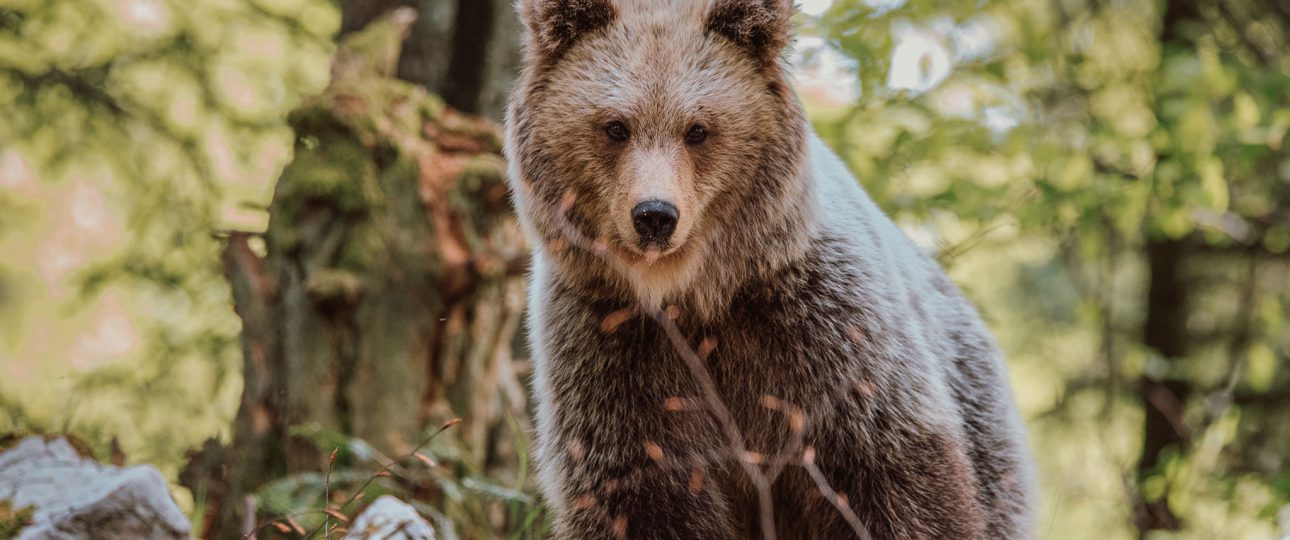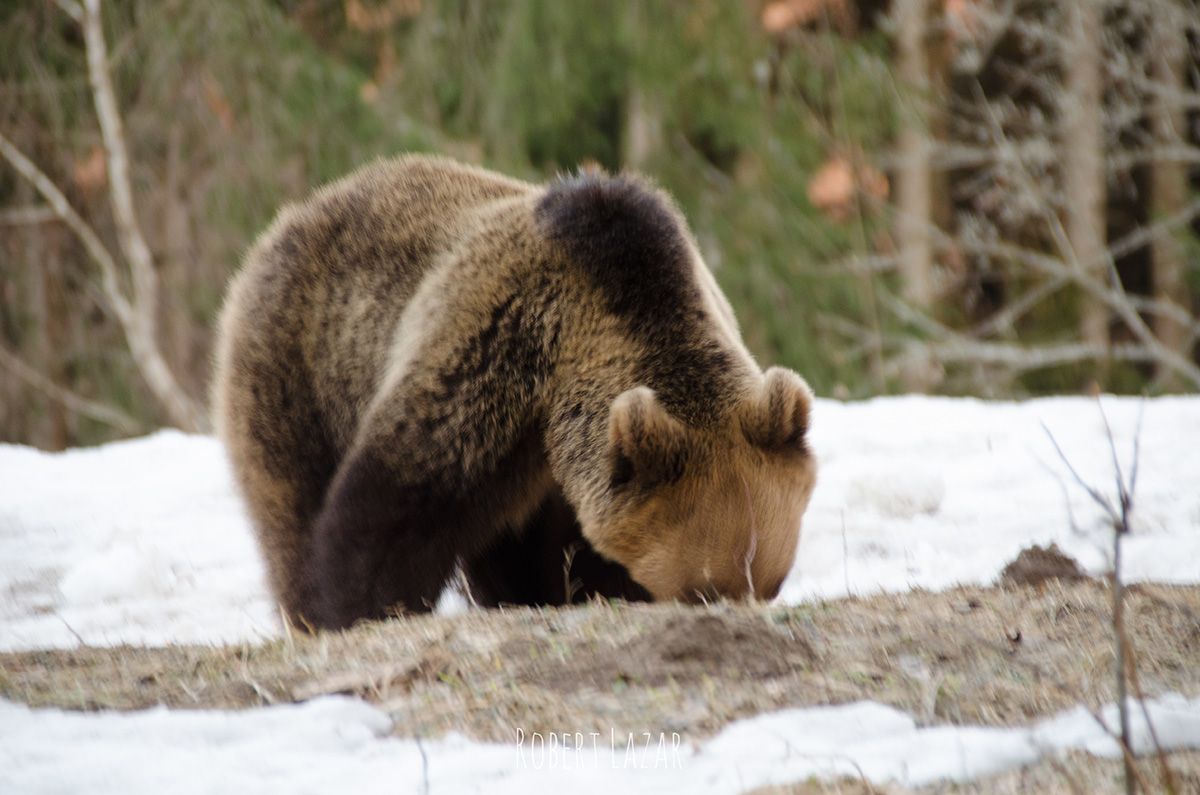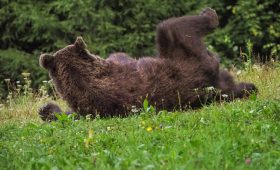If you already enjoyed seeing the bears from Romania, our recommendation is Slovenia, a beautiful country where brown bears can also be found in the wild.
Slovenia is a forest country and almost 3/5 of its area is covered by woods. That makes it also highly populated with wild animals, of which many brown bears.
The biggest European animal
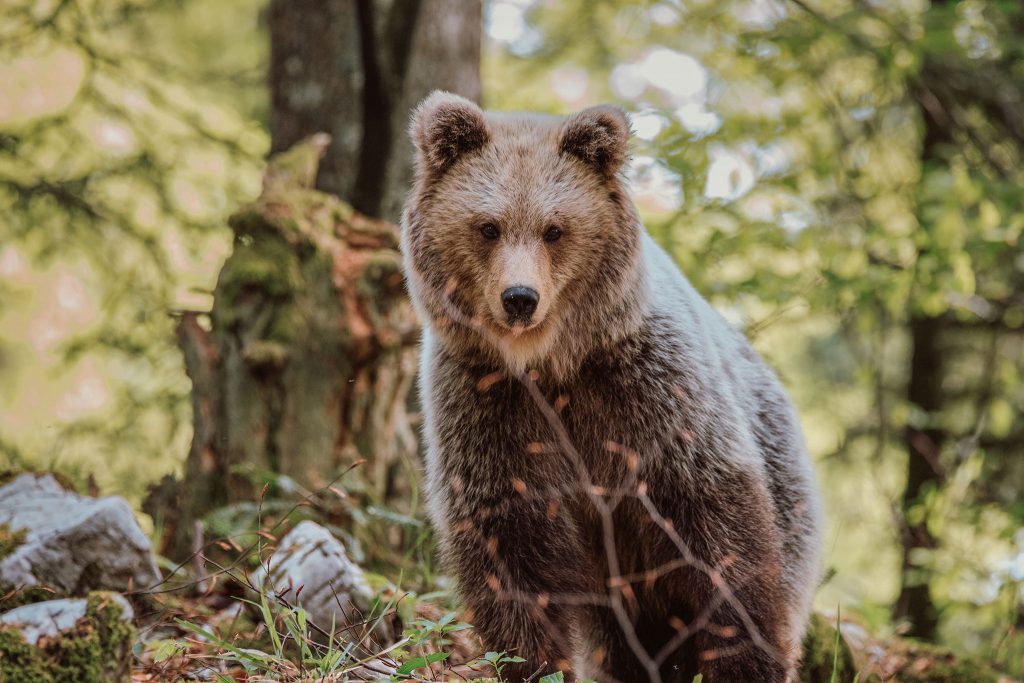
The brown bear or Ursus arctos in Latin is the largest living beast in Europe today. The bear is an important European species and protected by many international conventions. A bear needs a wide space to move, has an omnivorous diet, and also tolerates the presence of people which is why it is classified as a vulnerable species.
Thousand Slovenian bears
About 50,000 bears live on the Europe territory of which about 1.000 in Slovenia. The number of bears in Slovenia has been constantly and rapidly growing, so if you decide to join the Bear watching Slovenia, you will 100% actually see them. The central bear area territory in Slovenia includes the high karst, the dense mixed forests with varied and thick vegetation terrain in the Kočevje and Notranjska regions.
Meeting the bear
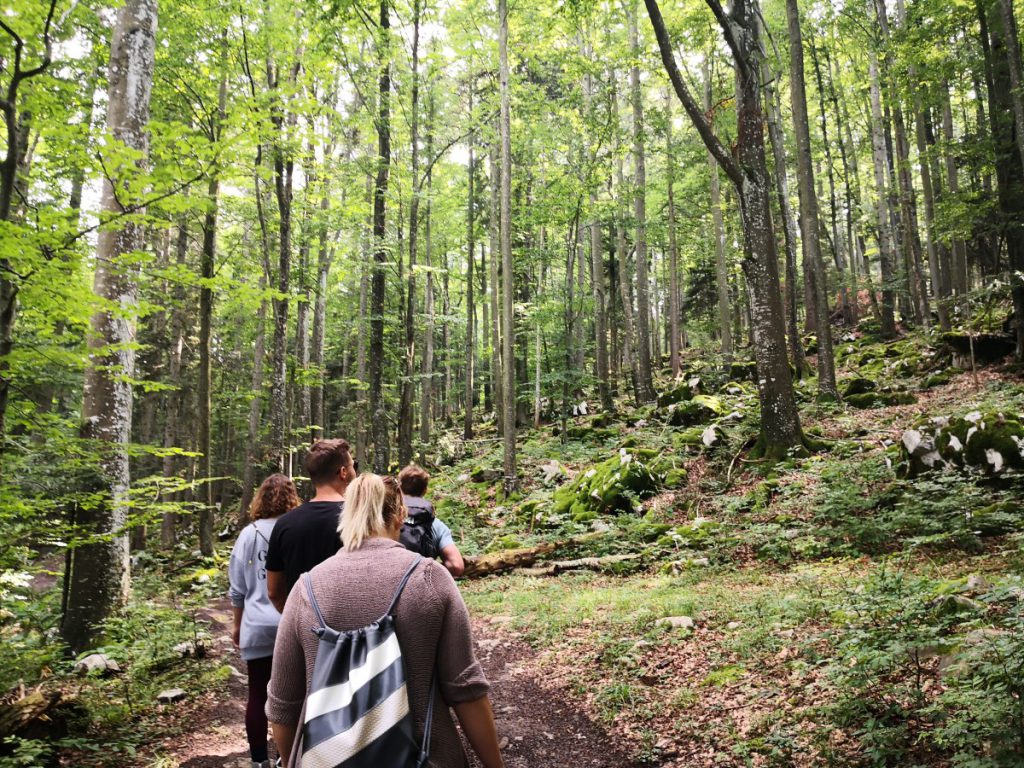
A combination of nature, landscape and wildlife is a unique opportunity to try this memorable experience while visiting Slovenia. Experience the adrenaline of bear watching and learn about the bear’s natural habitat and life in the intact natural Slovenian forests far from mass tourism locations. You will follow a wildlife expert to discover Slovenian deep forests, where you will meet Slovenia’s native brown bear through the wide windows of a safe wooden lookout and take amazing wildlife photos.
Smell-isolated hut
In the wild, bears will very rarely approach humans. As soon as they smell you, they quickly go in the other direction, so you will never meet them. That is why our observance hut is smell-isolated, allowing bears to come into close viewing range. Besides the mighty brown bear, you might also see wild foxes, martens, deer, wolves, badgers, skunks and other wild animals.
Bear watching is safe!
Bear watching tour is a completely safe experience. The only possible danger you might encounter is falling in love with the forest and its wild animals. We can assure you will want to come back soon and do it again! The bear watching activity also doesn’t disturb other animals as you are observing them from a closed and smell-isolated hut and the animals won’t even notice you were there.
Bear watching season
Since bears hibernate during wintertime, the best way to go bear watching is from May to October.
Bear facts
The European brown bear can grow up to 250 cm in length and a male can reach more than 200 kg in weight. Despite its clumsy appearance, a bear is an excellent runner, swimmer and climber. This giant, who lives up to 35 years, is the most prominent omnivore among Slovenian beasts.
Bear doesn’t attack
Due to its size, strength and sharp claws, meeting a bear can be dangerous, although a bear usually avoids close contacts with humans. If you are walking quietly through the forest and the wind is blowing in your direction, you might approach it. In this case, it’s probably best to keep calm. Don’t run away, move slowly and look away, as, in animal language, the eye contact expresses aggression.
What’s on the menu?
Contrary to common belief, bears are predominantly vegetarians. His favourite dishes are mushrooms, fruits, tubers, roots and green parts of plants. However, he’s no stranger to a snack of ants, wasps and other invertebrates, he also preys on rodents and larger animals.
Winter hibernation
In wintertime, brown bears hibernate, meaning they sleep for three months. During that period their blood temperature drops to 6˚C and they lose 30-50% of their body mass. In fact, it is about a special form of starvation, when the bear neutralizes toxic metabolic products. Because he does not even introduce any liquids into his body during the hibernation, toxic substances, especially urea, begin to accumulate in his body. The peculiarity of its metabolism is the reintegration of nitrogen from urea into body proteins.
Mother bear

Females carry their young for 6-7 months. They give birth in winter to 2-3 blind and deaf cubs who only gain their hearing after 2 weeks and sight after 4-5 weeks. The cubs suckle milk for 4 months and stay by their mother’s side for 2 whole years before becoming completely independent.
As you learn all about these magnificent creatures and the woods where they live, you will also be contributing to a good cause, as some of your fees go directly to the preservation of local wildlife.

